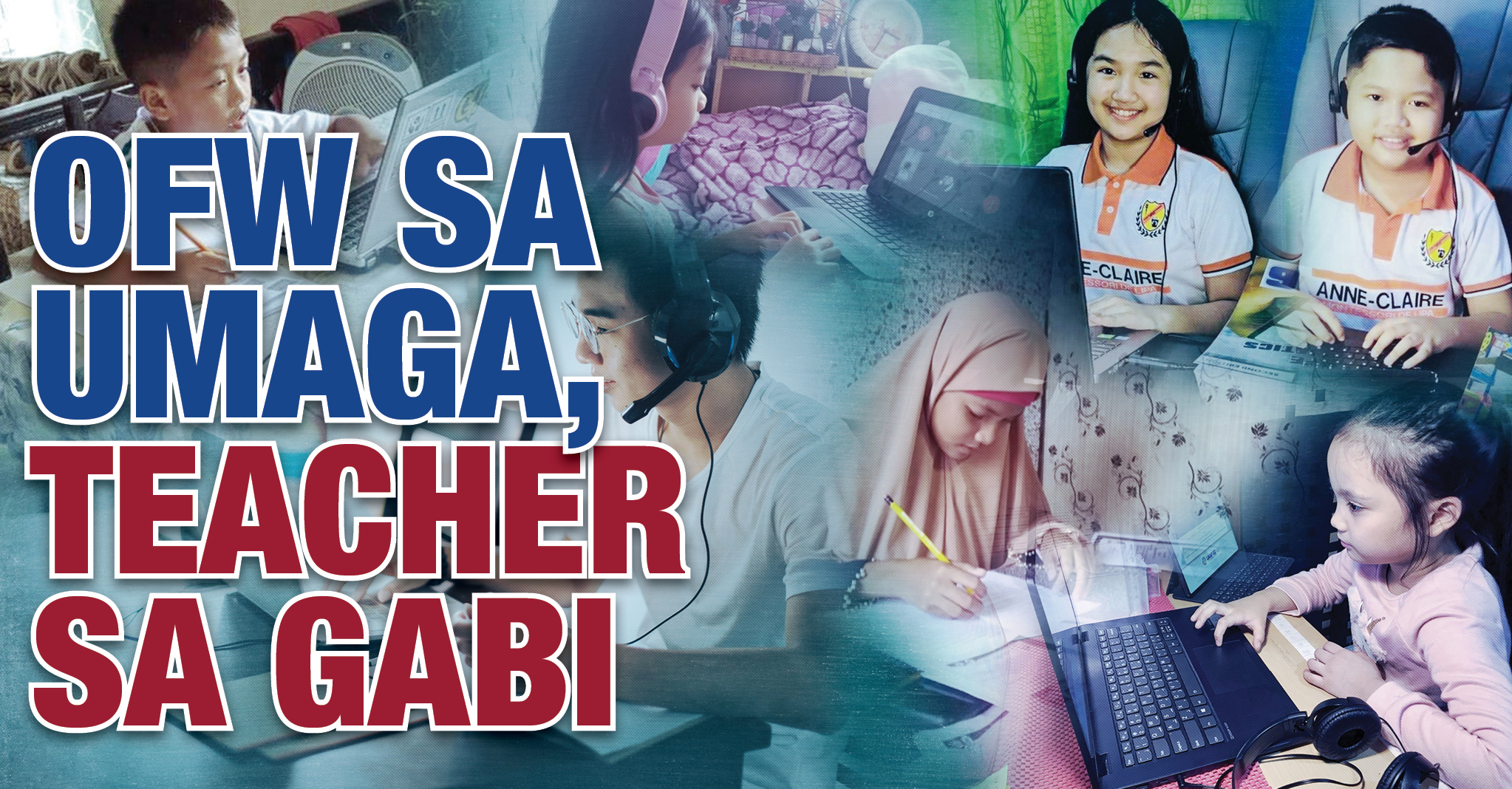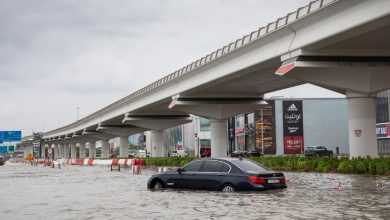Overseas Filipino Worker (OFW) parents in the UAE—whose children started their distance learning in the Philippines—said they too have gone back to the books and engaged with their children’s modules and handouts just to check up on how their kids are adjusting to the new normal in education.
Beyond financial support, OFW parents have become more involved in terms of helping their kids back home with the lessons. UAE-based OFW Elaine Ann Sumacot said that one of the challenges her fourth-grade child had encountered in the opening of the classes is the sudden change of environment—being forced to study in a setting without any social interaction with other students.
In order to address these concerns, she currently spends time making creative ways in order to support her kid in her lessons. “I create my own games for him like quiz bee, drawing, use of flashcards, etc. tungkol sa lessons ni teacher per day or week,” Sumacot added.
Mary Ann Mendez from Abu Dhabi stated that she calls her four kids every day to check up on their progress, and has tasked her eldest to double check on her siblings to assist them in their modules.
“Every day ako nakikipag-video call sa mga anak ko para alamin kung maayos ang mga pangangailangan nila sa pag-aaral. Ang panganay kong sila Antonnete at Darlene ang nag-aasikaso sa pagaaral ng kanilang mga nakababatang kapatid,” said Mendez.
One of the parents, Daisy Fajardo Capulong-Bonsol, told The Filipino Times that she has procured gadgets such as laptops and printers, as well as upgraded the internet connection for her son in Cauay City, Isabela, who is currently in the fourth grade to ensure that her kid’s education continues while keeping him away from risks of contracting COVID-19.
“It’s a struggle because there are so many things you need to consider. We tried to solve it by investing in these gadgets as well as upgrading the internet connection. Even if it costs more, I didn’t mind because my kid’s health and education are way more important, I don’t want to compromise that,” she said.
Blended learning
These parents are among the many whose kids in the Philippines are currently adjusting to what the Department of Education (DepEd) calls the “blended learning” in terms of conducting classes for the 2020-2021 academic year—which started on October 5 as sanctioned by the Republic Act 11480 (which allowed the President to set a different date for the start of the school year during a state of emergency or state of calamity).
According to DepEd Secretary Leonor Briones, their Basic Education-Learning Continuity Plan (BE-LCP) initiative will make it possible for schools all over the country to continue the school year.
In this technique, distance learning will be implemented in three ways—through online classes, modular learning through printed or digital materials, and through broadcasting classes via TV and radio. She explained that schools may choose from any of these methods to conduct classes to the students.
The secretary also noted that education institutions can also “contextualize” their BE-LCP to address the needs of students and teachers.
Learning with kids
After her shift as a homecare nurse, Manizah Arlie ensures that she has enough time to check up on her child back in Zamboanga who’s now on 7th grade. Both of them agreed to opt for a modular class, citing difficulties in internet connection in their area.
“Malaking adjustments po para sa kanya lalo pa at module type sila ngayon. Mas pinili nya mag-modular kesa online class sa kadahilanan ng mahinang linya ng internet sa bayan,” said Arlie, who regularly calls her kid, apart from entrusting her mother to take care of her daughter.
Elmer Casao, an engineer in Abu Dhabi, told his two kids who are in 6th and 3rd grades, to always be open to him and their teachers if they don’t understand certain lessons.
“I just told my kids to be open and ask if meron sila mga lessons na hindi pa malinaw sa kanila or Di pa masyado naiintindihan, na itanong nila ito sa akin via Facebook messenger or we can schedule a zoom call to discuss if necessary para mas maexplain ng maayos sa kanila ang lessons,” said Casao whose kids are currently under the care of his in-laws in the Philippines.
Benigno Paglinawan took a different approach for his kid this year by transferring her from a school in Dubai to a school in the Philippines that offers online classes only due to his child’s health condition.
“We opted to transfer Candace from her school in Dubai to a full online distance learning in the Philippines. We’ve decided to do it kasi Candace is Asthmatic and we thought na hindi pa ganoong ka-safe to do face to face learning. Since may distance learning experience na si Candace from the last lockdown dito sa Dubai, it’s not hard for her to understand that this is the new normal. Mahalaga din kasing maintindihan ng bata on why suddenly online na lang lahat, na she can’t see her classmate for now. We’re lucky na she understands the situation well at her age,” said Paglinawan.
No teacher and parent around
Other challenges that continue to hound the distance learning approach include learners who do not have parents who can help them study, according to Estela Cariño of DepEd’s Cagayan Valley regional office, during a virtual press briefing.
College student Divina Angelika D. Reyes said that distance learning poses a challenge to her ability to grasp the lessons, mostly because there is no one to guide her all the way through.
“Medyo mahirap kasi hindi ko na din minsan sigurado kung tama ba pagkakaintindi ko sa mga studies. Iba pa din po talaga siguro ang classroom setting since conditioned ang mga estudyante na our brains learn more efficiently on school settings. Tapos ayon po, hindi lahat napagfofocusan ng professors individually. Kung hindi flexible sa learning ang estudyante, it makes blended learning a challenge,” she said.
Quezeon City-based high-school student Jun Ariga also noted that since his parents are both OFWs, and he’s only with his grandmother who does not understand his classes, it becomes harder for him to learn complicated lessons.
“Wala naman ‘yung parents ko to teach and guide me sa mga mahihirap na lessons like sa Math. Hindi naman din ‘yun naiintindihan ng lola ko kaya minsan struggle kasi wala akong matanungan. Iba pa din talaga ‘yung may teacher na face-to-face makakausap mo ‘pag may hindi ka ma-gets,” he said.
Reyes, however, stressed that one way to make this new approach efficient is to have a better communication between professors and students. “Feeling ko kasi, pag maayos communication between students and teachers, bukod sa na-build ang better academic relationship, mas mamomotivate pa po both parties to find more flexible ways to teach, and to learn,” she said.
Leonardo A. Seradilla, a college professor in a private school in Laguna, told The Filipino Times, he said he tries to help students cope through tedious monitoring of the students, calling for everyone to recite to know if they are keeping up during discussion. “My assignments are also more of an essay type, so the students can truly share their learnings for a specific topic,” he said.
Face to face still preferred
After a week of online learning in the Philippines, OFWs still prefer face to face discussions, over distance learning – stressing that the importance of physical human engagement and social interactions are two things which outweigh the conveniences of learning from a gadget.
“Para sa akin, mas may advantage pa rin po ang face-to-face learning kasi mag nag-de-develop ang communication skills ng aking mga anak, pati natututo sila makisama. Sa online kasi, nandyan yung naka-encouter na ang mga anak ko ng nag-‘lag’ ang internet, nagsimula na ang online class pero nawala siya since may problema ang net,” said Abu Dhabi-based OFW Marifel Manimtim who regularly checks up on her two kids and their ongoing online classes in Camarines Sur.
Casao, hopes that there will come a time when schools in the Philippines will be deemed safe enough to allow at least a day or two when children can head back to their classrooms: “Online learning has its own advantages. Children now are more advanced on the use of technology. However, they lack physical interaction, which is important in their holistic growth and development. That’s why I am still hoping that sometime soon, Hindi man everyday sila nasa school, there will be a day or two na nasa school sila para maging balance ang kanilang growth physically, spiritually and emotionally.”
Still, OFW parents have also expressed hope and confidence about the Philippines’ distance and blended learning – stating that it’s likewise important for kids to continue learning and adjust to the challenges posed by the pandemic.
“Despite this new medium, malaking tulong pa din na tuloy tuloy lang ang pag-aaral ng mga bata. Sayang kasi ang idle na oras na nailalaan lang nila sa paglalaro atleast may oras kahit papaano sa pag aaral. Pwede naman kumuha ng tutor or mag laan tayo ng oras para i-follow through ang lessons,” said Sumacot.






